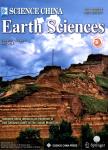Petrogenesis and significance of early Yanshanian syenite-granite complex in eastern Nanling Range
Petrogenesis and significance of early Yanshanian syenite-granite complex in eastern Nanling Range作者机构:State Key Laboratory of Mineral Deposits Research Department of Earth Sciences Nanjing University Nanjing 210093 China Tianjin Institute of Geology and Mineral Resources China Geological Survey Tianjin 300170 China
出 版 物:《Science China Earth Sciences》 (中国科学(地球科学英文版))
年 卷 期:2005年第48卷第7期
页 面:912-924页
核心收录:
学科分类:0709[理学-地质学] 070901[理学-矿物学、岩石学、矿床学] 07[理学]
基 金:the NationalNatural Science Foundation of China(Grant Nos.40132010 ,40125007) the State Key Fundamental Research Project(Grant No.1999043209)
主 题:syenite-granite assemblage single zircon U-Pb age rifting environment Nanling Range.
摘 要:In the eastern Nanling Range there exists the early Yanshanian syenite-granite assemblage. A representative example is the Pitou-Tabei complex composed of the Tabei syenite pluton and the Pitou syenogranite pluton in southern Jiangxi Province. U-Pb zircon dating yields ages of 188.6±2.2 Ma for the Tabei pluton and 186.3±1.1 Ma for the Pitou pluton. The Tabei syenite is characterized by relatively low SiO2 content (62.40% - 68.75%), high alkalis (K2O+Na2O = 10.56%-11.96%), low percent K2O/Na2O ratios (0.56-0.93), metaluminous fea- ture (A/CNK = 0.80-1.00), enrichment in LILE (Rb, Ba, K) and HFSE (Th, U, Nb, Ta, Zr, and so on), weakly negative to positive Eu anomalies (δ Eu = 0.63-1.82), relatively low (87Sr/86Sr)i (0.70412-0.70543), and relatively high ε Nd(t) (3.14-3.52). The Pitou syenogranite is charac- terized by high silicon content (SiO2 = 71.06%-76.28%), relatively low alkalis (K2O+Na2O = 8.10%-9.80%), high percent K2O/Na2O ratios (1.22-1.94), metaluminous feature (A/CNK = 0.94-1.07), enrichment in Rb, Th (U), K, depletion in Ba, Nb, Ta, Sr, P , Zr, Ti, high ΣREE (av- eraging 451.03 μg/g), strong negative Eu anomalies (δ Eu = 0.27-0.33), relatively high (87Sr/86Sr)i (0.70805-0.70912), and relatively low ε Nd( t ) (?5.35-?6.29). The Tabei syenite and Pitou syenogranite both have the characteristics of A-type granites. The former is considered to be from the asthenosphere mantle, and the latter was the product of the crust-mantle mixture. They both were probably formed in a rifting setting.



